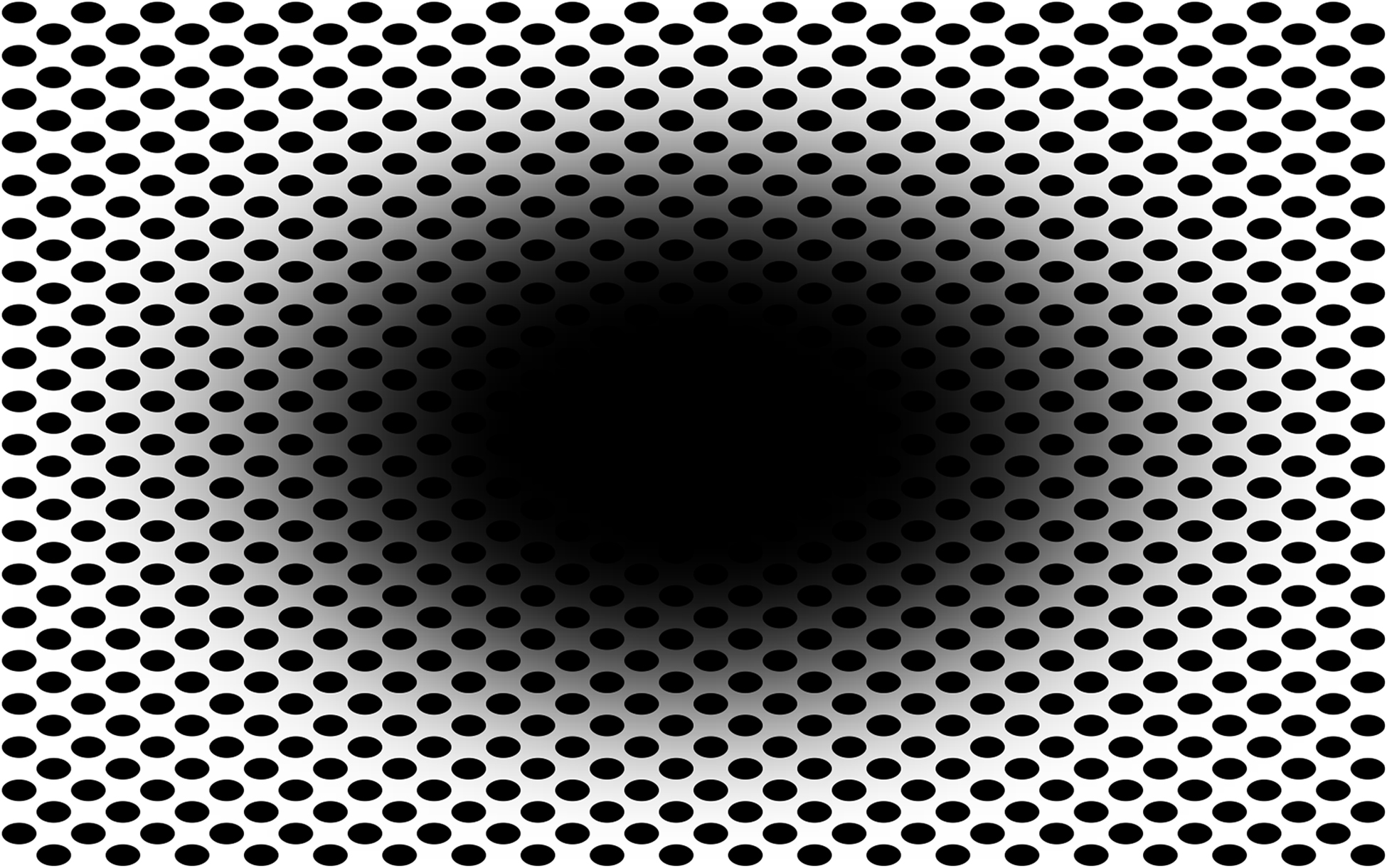 |
| When the central stimulus in the photo above is black, the pupil expands; when it's white, it constricts. Photo: Bruno Laeng/Front. Hum. Neurosci. Click image to enlarge. |
The results of a new study involving ocular response to visual illusions have created a buzz on social media over the past few weeks, with findings that the pupil adjusts to certain stimuli in a way that creates illusory expanding holes. Interestingly, patterns of static-colored circles, including white, caused the pupil to constrict, while static black circles caused the pupil to dilate in preparation for a change in luminance.
Fifty participants with normal vision, aged 18 to 41, viewed a total of 26 different hole patterns consisting of a central elliptical-filled region on a background of equally spaced dots. For comparison of pupil response, they were also shown 26 images with scrambled pixels and no discernable pattern. Patterns were each shown for eight seconds on a computer screen as the researchers measured the diameter of the pupil using an infrared eye tracker to evaluate its physical responses to the stimuli. After each image was shown, participants gave a rating using the Likert scale for the magnitude of the experienced illusory motion.
The data confirmed the following hypothesis of the study: “Pupil response is related to the magnitude of the illusory effect; that is, when the central region is black, the pupil will show a dilation response, from an equiluminant baseline, that is proportional to the subjective degree of expansion.” On the other hand, the researchers also observed that constriction of the pupil in response to colored central regions was proportional to the subjective degree of expansion.
These natural pupil responses actually serve to protect our eyes, the study authors explained in their paper for the journal Frontiers of Human Neuroscience. “A preparatory constriction to illusory light could have an important function by promoting behavior to avoid being ‘dazzled’ by physical (real) light,” they wrote. “In fact, glare can temporarily incapacitate sight and lead to life-threatening situations (e.g., it is a common cause of lethal traffic accidents). In general, by constricting its diameter, the pupil may moderate the amount of energy entering the eye, not only to optimize vision but also to protect the retina from excessive light exposure.”
Hole brightness significantly explained about 64% of the pupil responses, though contrast level wasn’t found to have a significant effect. The researchers noted, “Since a sizable portion of pupillary changes remains unexplained by either brightness or contrast, it is possible that the pupillary response also relates to the conscious perception of expansion.” Their findings confirmed this may, in fact, be true.
A couple of participants were unaffected by the illusions, and the reasons for individual differences are not yet understood.
The authors concluded, “The illusory motion and the pupillary adjustments represent compensatory mechanisms to the perception of the next moment, based on shared experiences with the ecological regularities of light.”
Laeng B, Nabil S, Kitaoka A. The eye pupil adjusts to illusorily expanding holes. Front Hum Neurosci. May 30, 2022. [Epub ahead of print]. |


